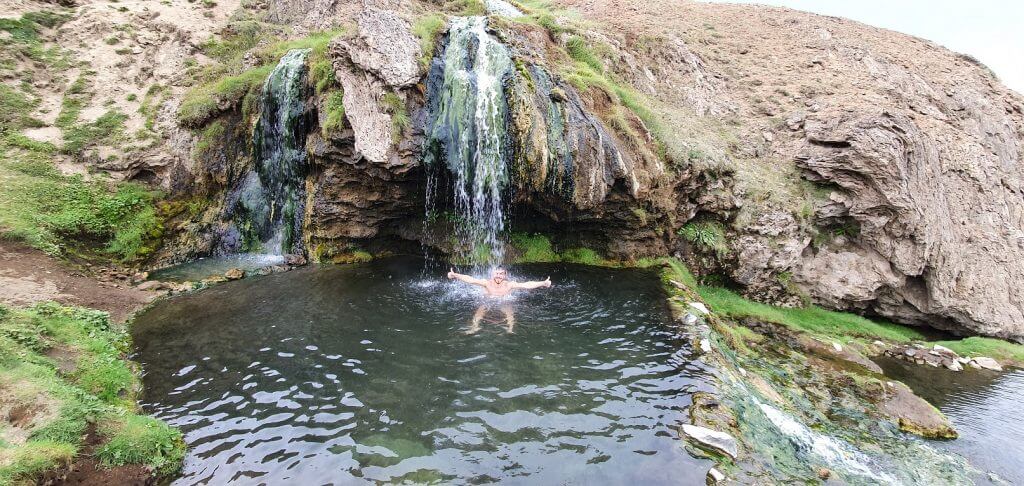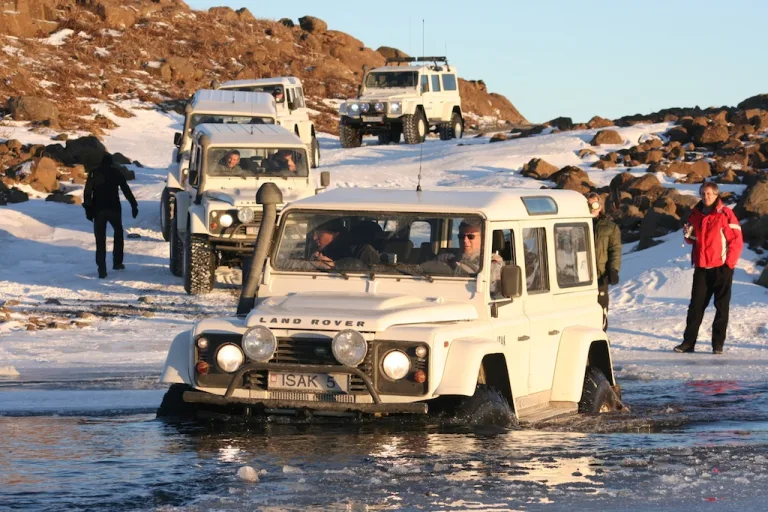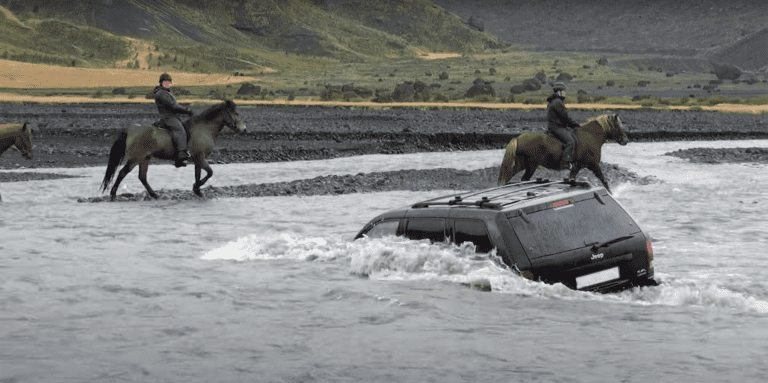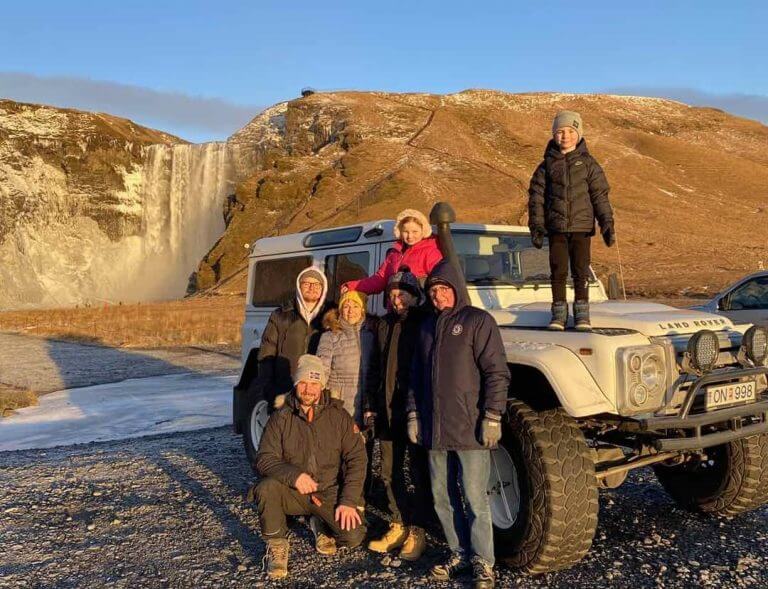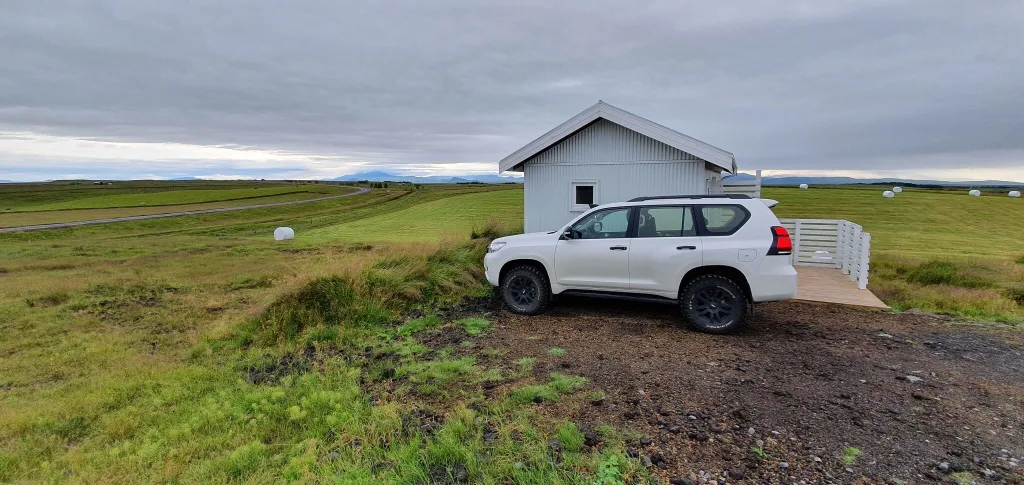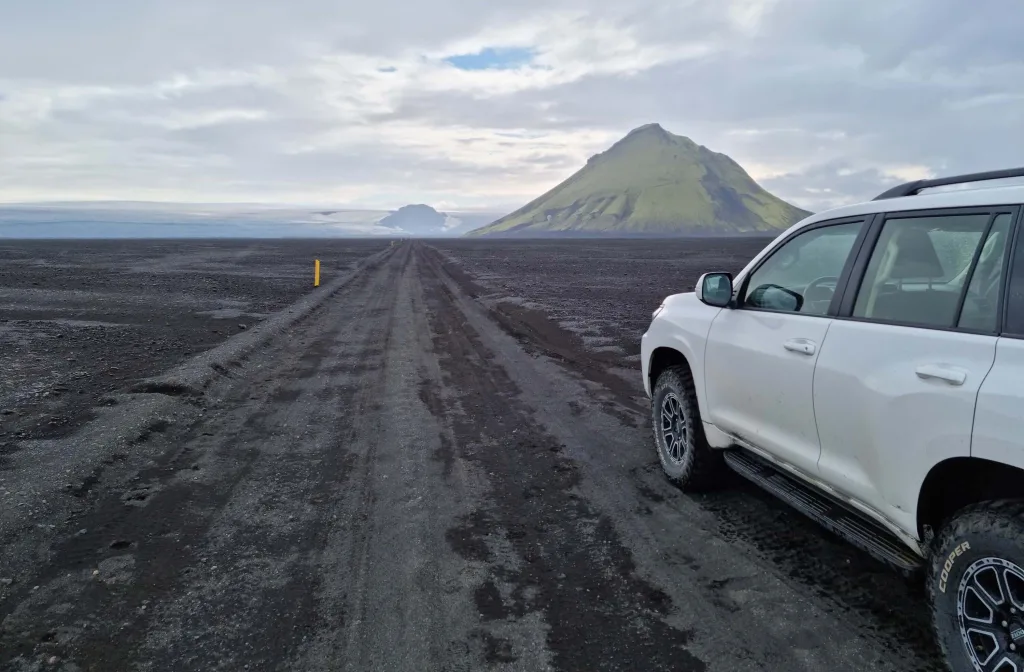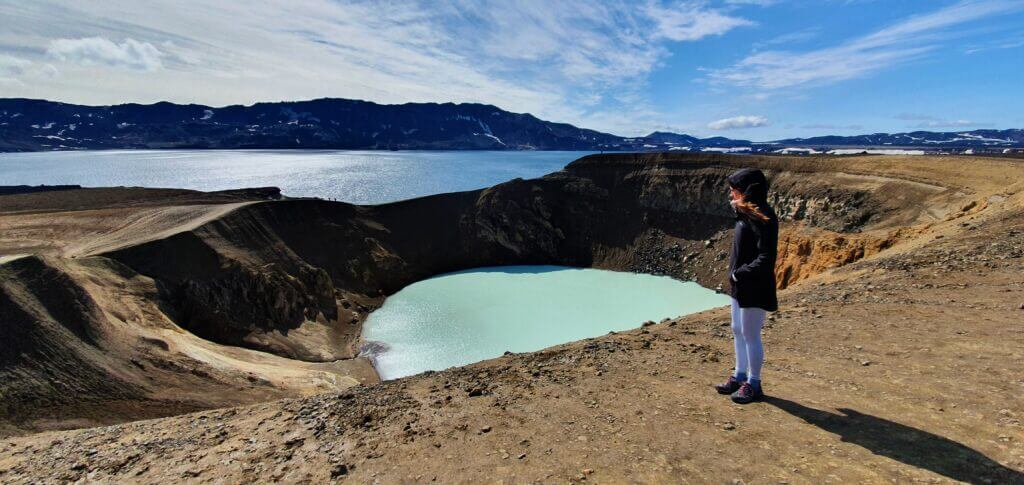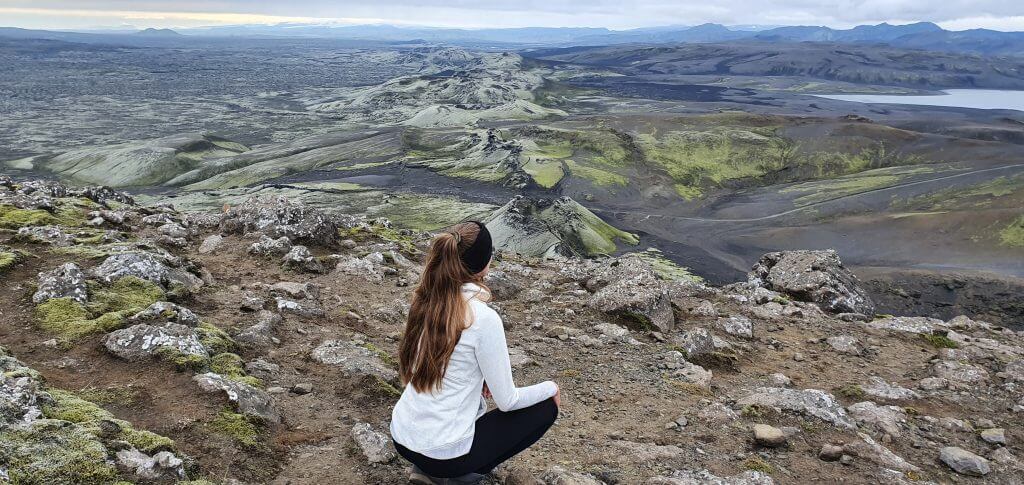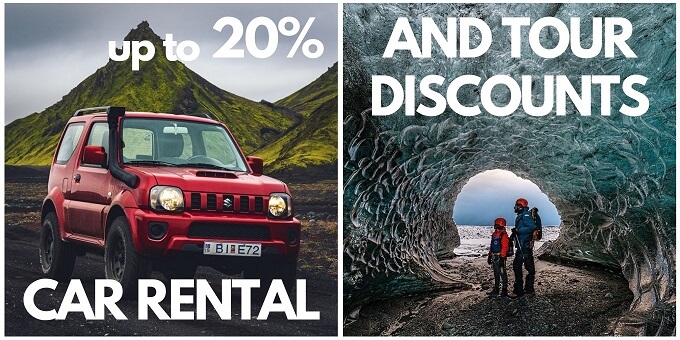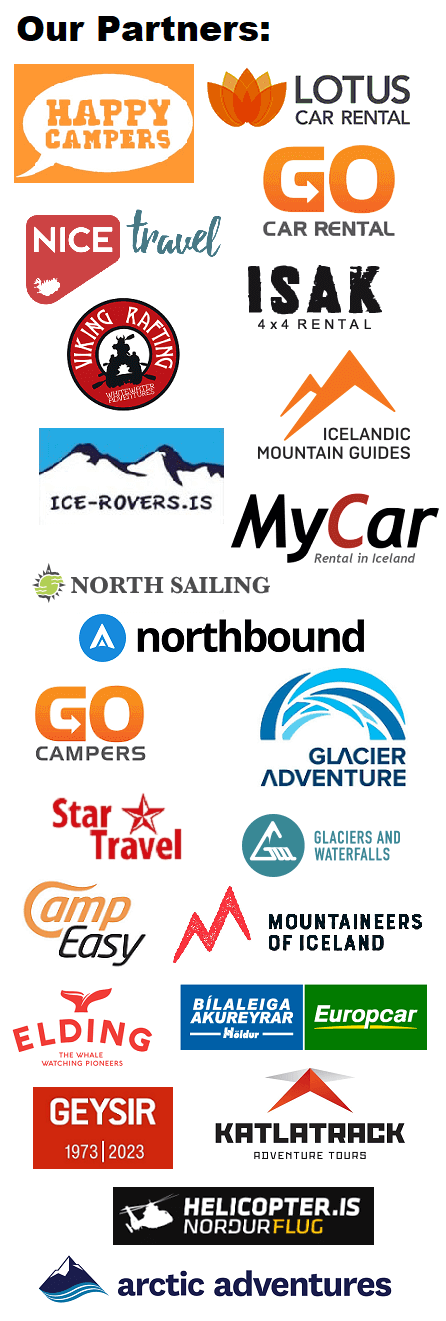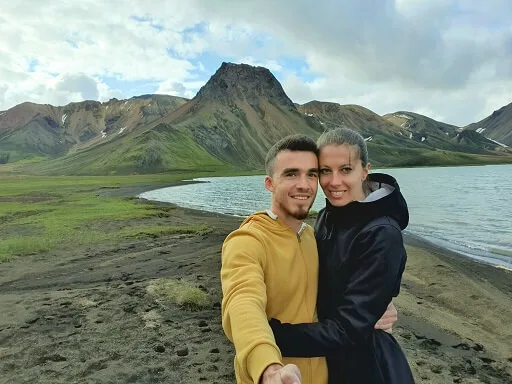Icelandic highlands are one of the last places on earth where you can still find stunningly beautiful places without the masses of tourists. And they are even pretty accessible when you prepare properly. The correct Icelandic pronunciation should actually be the Highland of Iceland, but we will rather stick to the name foreigners refer to.
We’ve been to the most beautiful places in the Highlands countless times, and we are happy to share all our experiences below.
Contents
What to expect in the Highlands
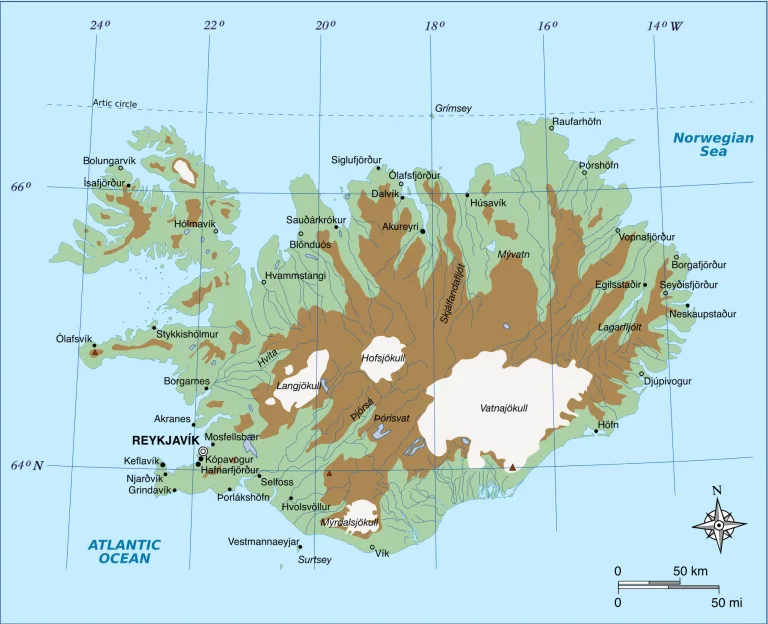
Map of the Icelandic Highlands (brown color). Picture by Pethrus under Creative Common license. Click to enlarge.
The difficult
What should you expect when visiting the highlands of Iceland? First of all, don’t expect this trip to be easy, quick to plan, or hassle-free in any way. Be prepared for an adventure and for things often not going the way you planned them.
Trip schedule? Expect to change plans very often due to the weather.
Rain? Plan activities also for rainy days.
Sleeping in a rooftop tent? With a spouse who doesn’t like the cold – nope – not even in summer.
The most difficult parts of the highland roads in Iceland? River crossings. Study river fords in Iceland well ahead to manage them correctly.
The reward
Once you overcome all the obstacles like renting an expensive car, crossing the rivers, and getting used to imperfect weather, your reward will be huge.
Miraculous canyons, lush green volcanos, wild hot springs, and black beaches are just some of the wonders you will experience in the Icelandic highland.
And what’s the best part about visiting the highlands? Most of the time, you will be alone! Remote, picturesque, and harsh. These are the 3 words that would describe Icelandic highlands the best.
When to visit Highlands
If you want to go for the highlands, the choice of a season is quite narrowed down. The Highland is all about F-roads and unpaved tracks which are even worse than F-roads. And you need them to be officially open. And the roads are officially open only during summer.
To have a near-certainty of the open F-roads you have to go between mid-July and mid-September. Sooner than mid-July, some roads may be still closed because of the not-yet-melted snow and later than mid-September, some roads may start to be closed due to more rain or already new snow.
Our tip: Come between mid-July and mid-September to be almost sure that F-roads will be open and passable.
Even going in August will not guarantee you 100% that all the roads will be passable. But your chances will be high.
One example for all. We had planned to drive through F26 on the 26th of August and the road was marked impassable exactly the day before, on the 25th, due to rain and high water level in the Hagakvislar River. Be flexible with your plans and always have a backup option at hand.
How to reach the Highlands
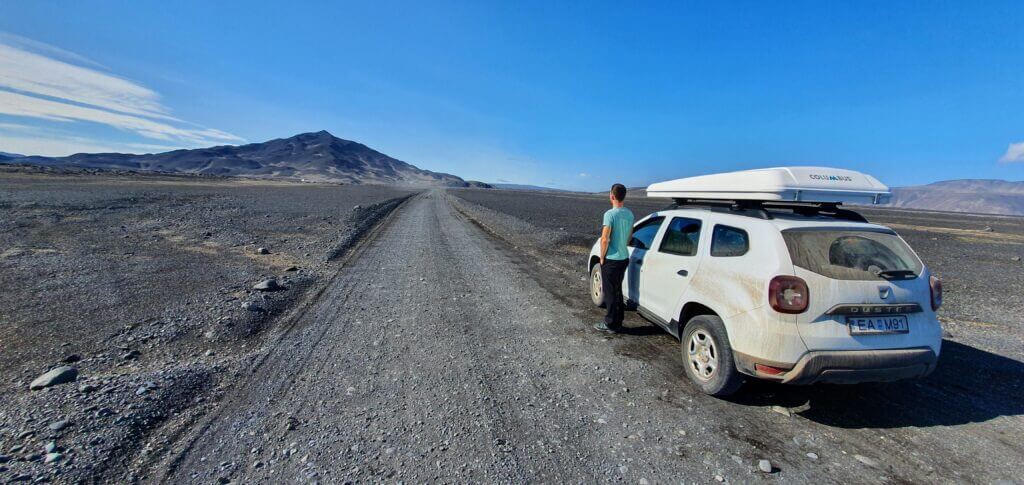
Dacia Duster is sufficient for some of the easier parts of Highlands in good weather conditions
Car
Your car will be your most valuable asset during your Icelandic road trip. You will probably spend a lot of time in the car when going into the highlands. This means, your car should be a high-quality one and well-insured.
The choice of a proper rental car is the most important decision when it comes to your highlands trip. Of course, if you’re going “only” for the ring road, you will be good pretty much with anything. But this article is about the highland, right? And for the highlands, you need a proper car!
The best car for Highlands
There is no definite answer to the question “What car should I choose for my trip?”. It always depends on the places you plan to visit, the weather at the time of your visit, road conditions, and your driving skills.
Generally speaking, it’s mostly about river crossings – the bigger you go for, the bigger car you need. However, some roads do have also different threats – big holes, steep slopes, sharp stones, and narrow passages. All-in-all, the bigger car, the better 🙂
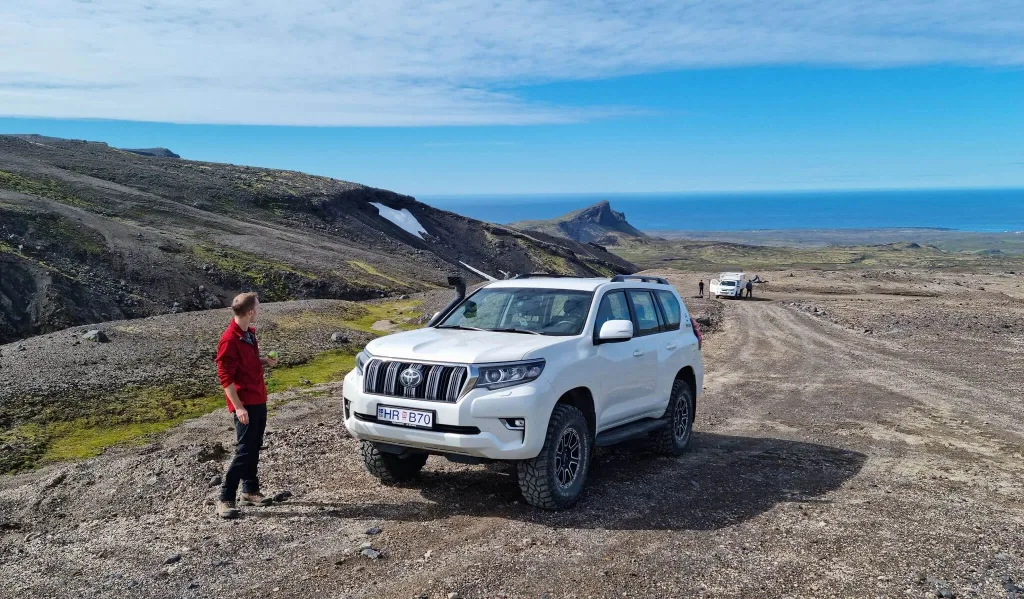
Modified Land Cruiser by e.g. MyCar can pass almost anything
If you go for the roads with only small to medium river crossings, like Landmannalaugar, and without any really steep hills, you should be fine also renting a Dacia Duster (and similar) in the middle of summer when the conditions are good.
If you plan to drive more advanced roads, like the ones towards Maelifell or Þórsmörk, or even roads to Askja or Laki craters in worse weather conditions (higher water levels, rain, …) then you should aim for bigger SUVs like Toyota Land Cruiser and bigger.
Super Jeeps
To maximize your chances of passing through all kinds of terrain and rivers, it’s of course best to rent the super-jeep kind of vehicle. This, in our understanding, is any car that has already been modified to have at least 31”+ tires, high ground clearance, and ideally a snorkel as well. These are cars like Land Rover Defender and any modified toys such as height-raised Jimnys, Land Cruisers, Pajeros, Hiluxes, and so on.
Our tip: We wrote a detailed guide about possibilities of renting a super jeep in Iceland.
For our longest 18-day highlands trip, we rented a modified Toyota Landcruiser. There aren’t many rental companies where you may rent these in Iceland and if there are, they are expensive as hell. We made a thorough research and arrived at two companies that are both still affordable and can rent you a high-quality super-jeep-like car.
The first of them is Isak car rental, specializing in Land Rover Defender rentals. The second of them is MyCar, which specializes in Toyota Jeep rentals. We’ve driven tens of thousands of kilometers of highland roads in a modified Land Cruiser by MyCar and Land Rovers by Isak and they stood well on all terrains! We’ve luckily never had a single problem and instead had a really smooth journey.
Bonus: Our readers can enjoy a 10% discount for Isak with the discount code: epiciceland, and 5% for MyCar with the promo code: EPICICELAND
Car Insurance
Same as the car is your most important asset, car rental insurance is your most important insurance in Iceland. You don’t want to pay 10 000 USD for a car repair, right?
Unfortunately, most of the insurance packages sold by car rental companies do not cover some most expensive damage types. Damages to the undercarriage/chassis of the car, engine, or any water-related damages are NOT covered under 99% of the insurance plans.
Our tip: We wrote a detailed guide on understanding the car rental insurance in Iceland.
The only car rental company which includes all of the above-mentioned damage types in their platinum insurance package is Lotus Car Rental. If you plan a ring road trip with some highlands, then Lotus is the best car rental choice for you. However, Lotus doesn’t rent super jeeps, their biggest options are classical Toyota Land Cruiser and Toyota Hilux – which are still good for most cases!
Bonus: You can have a 5% discount for Lotus car rentals with the discount code: epicicelandd5
Super jeep insurance
If you plan to go for the pure highlands trip with many difficult tracks and F-roads, you may want to reach for an even bigger car than Land Cruiser. You can rent such cars with MyCar or Isak car rental. Their insurance options, however, do not cover the above-mentioned damages. Does this mean you cannot be insured for these damages? No, you can!
Our tip: RentalCover 4x4 insurance unfortunately isn’t bookable for US residents.
There is a 3rd party insurance provider – RentalCover – which can insure you even for undercarriage/chassis damage, damage to the engine, and many other types of accidents that are not covered by ordinary insurance policies. Moreover, RentalCover is also reasonably priced, and we happily use them for our highlands trips instead of the rental car insurance package.
Tours and Buses
If you don’t want to rent a car and drive yourself, you still have some options. Just a word of warning – they are either limited (buses) or expensive (super jeep tours).
Super Jeep tours
The most intense and adventurous option is guided super jeep tours. They often operate even outside of the main season. These highland tour operators have big super-jeeps driven by experienced local drivers trained to reach any destination in almost any conditions safely.
Pros: small group, some run all year round, private guide
Cons: price
Our tip: The super jeep tours may be able to drive you e.g. to Landmannalaugar, or other spots in highlands, even if the F-roads are not officially open for tourists yet.
We believe the best local and small super jeep tours are run by:
- Glaciers and Waterfalls from Reykjavik, 10% discount code for our readers: EPICICELAND
- Star Travel from Akureyri, 10% discount code for our readers: EPICICELAND
- Us 🙂 Epic Private tours from anywhere
Highlands Buses
The cheapest option to reach Highlands is to use highland buses. They run in summer from Reykjavik to the two most popular spots in the highlands – Landmannalaugar and Þórsmörk.
Pros: price
Cons: bigger groups, no guide, only run in summer, fixed schedule
Þórsmörk buses:
- Þórsmörk highland bus by Reykjavik Excursions, 10% discount code: EPICICELAND
- Thórsmörk Highlands bus by Travel Experiences
- Hikers’ Bus to Thórsmörk by Travel Experiences
Landmannalaugar buses:
- Landmannalaugar highland bus by Reykjavik Excursions, 10% discount code: EPICICELAND
- Landmannalaugar highlands bus by Travel Experiences
- Hikers’ Bus to Landmannalaugar by Travel Experiences
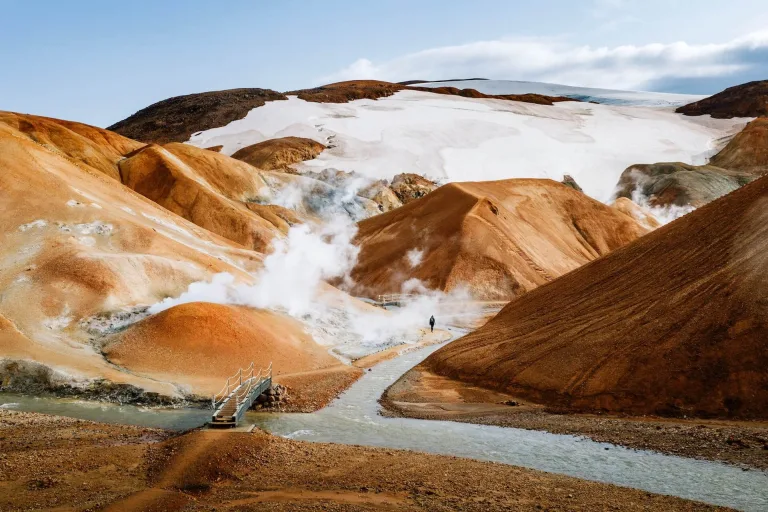
Kerlingarfjöll guided bus tour by Arctic Adventures. Contact us for discounts or subscribe to our newsletter.
Bus Tours
The second cheapest option is to use guided bus tours to the highlands. They run in summer from Reykjavik to Landmannalaugar and to Kerlingarfjöll, and from Mývatn to Askja.
Pros: price, guide
Cons: bigger groups, only run in summer, fixed schedule
- Landmannalaugar bus tour from Reykjavik, 5% discount code: EPICICELAND23
- Kerlingarfjöll bus tour from Reykjavik, 5% discount code: EPICICELAND23
- Askja bus tour from Mývatn by Mývatn Tours
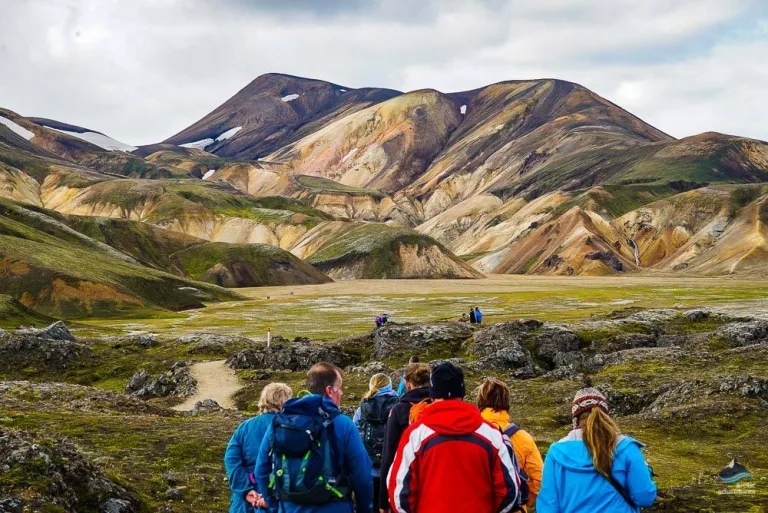
Landmannalaugar guided bus tour by Arctic Adventures. Contact us for discounts or subscribe to our newsletter.
Where to stay in the Highlands
You have several options for Highlands accommodation in Iceland. These include mountain huts, classical hotels or hostels, private cabins, and campsites. It’s typically best to combine them in a reasonable way. Let’s break down all the lodging options a little bit including our experience with them.
Lodging – one base
The first option is to have just one base, be it a hotel, a hostel, or a cabin. If your base is well located, you may then drive for various highland day trips and always arrive back at the base.
Pros: flexible, comfortable, less planning
Cons: more expensive, more driving, booking required
Lodging – different bases
Your second option is to stay at different accommodations each night, preferably the closest to the places you plan to visit. This is definitely a more efficient way, but harder to organize.
Pros: comfortable, less driving
Cons: not flexible, more expensive, more planning, booking required
Tent
By far the most flexible accommodation option for the highlands is to sleep in a tent at campsites. Or in a rooftop tent of your car. You don’t need to book anything in advance and can change your plans at any time. The price you pay for this option is comfort.
Pros: most flexible, cheapest, less driving, booking not required
Cons: uncomfortable
Our tip: The only company renting out a super jeep with a rooftop tent is Isak, with their 76’ Land Cruiser. 5% discount code: epiciceland

Landmannalaugar Brennisteinsalda campsite on a summer evening
Campervan
Should you rent a campervan for the highlands? It depends. If you plan to see easier-to-reach places, then definitely yes. However, no campervan can cross big rivers or drive the steepest F-roads. Some places will simply be out of reach for you.
Pros: flexible, less driving, kind of comfortable
Cons: You cannot rent a super jeep campervan :-/ so no big highlands
Our tip: You may drive most of the F-roads in a 4x4 campervan, but not all of them. Always consult with a rental company before embarking on a journey!

This is how it looks inside of the Nyidalur mountain hut on F26, in the middle of the central highlands
Our experience
We mixed options number 1 and 2 on our biggest Highlands journey. We first had one base to stay at (Hella) and explored everything at a reasonable distance from it. Then we hopped from lodging to lodging at different places, which means we were less flexible weather-wise, but if lucky, we could see more places.
Another concept includes staying at campsites. This gives you the weather flexibility and the possibility to see a lot of different places as well. However, it’s naturally not that comfortable, so this time we gave a shot to mixing the first two concepts.
Many travelers prefer renting a campervan, which is, of course, a plausible option if you plan to drive the ring road only and/or some highlands. But if you need a big car / super jeep for the proper highlands trip, sorry, but there’s no such thing as a “super jeep campervan”.
Actually, there’s one and only option to do this – rent a 76’ Land Cruiser with a rooftop tent with Isak 4×4 with a discount with the promo code: “epiciceland“. No other super jeep campervans or super jeeps with rooftop tents are suitable for difficult F-roads.
Highlands road trip preparation
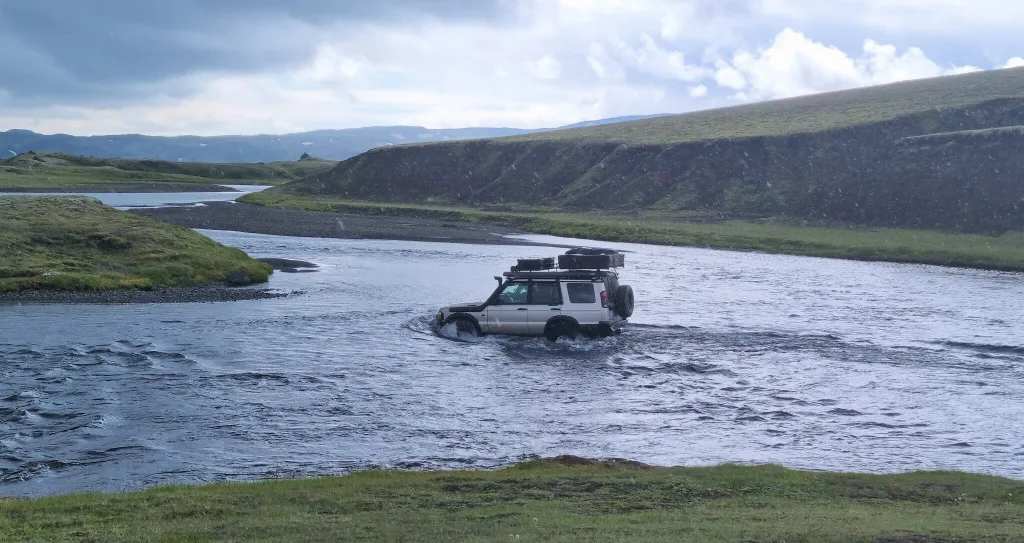
Crossing the (often) treacherous Syðri-Ófæra river on F233
Roads
Icelandic Highland roads are called the F-roads. You probably already know it if you are reading this article 🙂 Some of them are steep, some of them are narrow, some contain big river crossings, some have unstable terrain, well, and some have all of these. TLDR, F-roads are difficult to drive.
Our tip: Be sure to study every F-road before driving it to know what to expect. Here is the list of the easiest F-roads.
Besides F-roads, there are also the so-called dirt tracks in Iceland. These tracks are even harder than F-roads and no insurance in the world covers them. You will find them only on Icelandic Maps. We cover the most beautiful dirt tracks in our flagship F-road article mentioned above.

The same place – lake Langisjór – on a rainy day vs. on a clear day. See the difference?
Weather
Be flexible. Plan for frequent changes due to different weather than expected. Always have some Plan B. This will save you a lot of frustration.
It often rains, it’s frequently windy, and fog is also very common in the highlands during summer. It only very rarely snows, though.
Our tip: We stayed near Hella for 8 days and I had prepared 12 different day plans, in case the weather got worse at any of the places and then I just picked every day according to the next-day weather forecast.
Chase the weather, if necessary. By understanding the Icelandic weather forecast well, you may find spots of good weather even if it rains in most places. We wrote an entire article about how to find good weather in Iceland, see the link above.
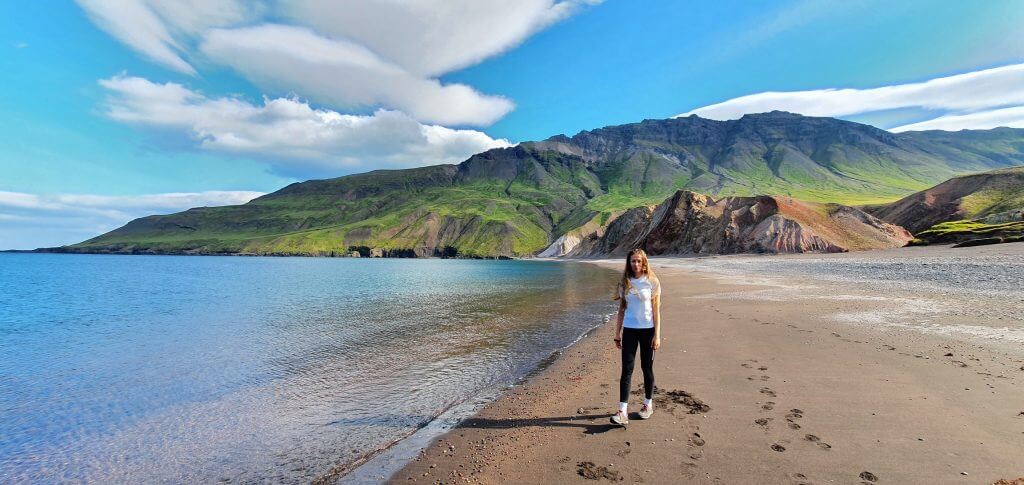
Virtually everything between a T-shirt and 4 layers with a jacket. These are the clothes for the highlands.
Clothes
I’m not much of a person who would advise you which jacket you should buy on Amazon 🙂 But I can definitely advise you to dress well for the highlands. What does “dress well” mean? Well, dress for any kind of weather – especially rain, wind, and cold.
A waterproof layer (pants and jacket) is a must (at least in your backpack). Something to protect you from cold and wind is a must as well (some backup hat, gloves, jacket, etc.). You might not need any of these if the sun shines and the wind is non-existent, but they become priceless if the weather turns to the dark side.
It’s pretty normal to experience 5°C (40°F) temperatures (or even lower) even during the middle of the summer when hiking in the highlands of Iceland. Add a strong wind to this and you can easily feel like it’s -10°C (14°F)! Highland can be freezing cold.
I’ve always taken at least 2 bottom and 4 upper layers, though I often didn’t use all of them. The upper layer should always have the ability to be 100% waterproof. My wife oftentimes even took 1 additional layer compared to me.
Equipment
Do you need hiking poles? For 90% of the trails, I would say you don’t. BUT. For some steep sections with uneven ground, these may save your life (or at least a broken leg). My final advice would be – better take them.
Do you need crampons? No, you don’t. And if you wonder whether you need them, better reconsider your plans 🙂 Personally – I would NOT go for any hike which requires crampons in Iceland unless you are a really experienced winter-mountain-hiker. For ice caves, you need to take a guided tour.
Our tip: You can buy most of the car equipment and even hiking equipment at larger gas stations.
Anything other to take? Good shoes, sun cream in case of sunny weather, water, and food. There’s no place to buy any in 99% of the highlands area.
As for the car – I recommend taking the:
- reserve fuel jerry can, full of fuel
- towing rope, just in case you get stuck and need an urgent pull
- spare wheel or a flat tire kit, and learn how to use them
Our tip: Before driving the roughest F-roads, lower your tire pressure to about 22-25 PSI to avoid a flat tire. After you finish, increase it back.
The day plan
I suggest leaving as early as possible in the morning. You may relax and enjoy your spare time in the evenings. But you can never know for 100% how long will it take you to complete your highlands trip.
When doing time estimates, count with food pauses, photo pauses, wading rivers before crossing them, stopping to admire the landscapes, etc. In other words, reserve some time for unexpected circumstances.
Our tip: Getting stuck in highlands is not very pleasant. But getting stuck in highlands during the night is much worse. Better try to avoid this.
We always tried to wake up at 7 AM (or earlier) and leave at 8:30 AM (or earlier). This way we had at least 10 hours of daylight to explore each day with some reserve of 2-3 hours. Often, we arrived at our accommodation long after dark anyway 🙂
Additionally, I’ve always had some “core/must-see” things for each day, and around those I built our daily itinerary. On top of that, I had several “optional” spots to see, if time, roads, our energy, and weather allow. I suggest using this tactic also for you.
Safety
Watch out for weather alerts and road warnings. Safetravel.is and Road.is should be your number one friend. In case there’s any problem, you should find info about it on these websites.
Be prepared. Things may get worse than expected anytime. This includes worse weather, hiking conditions, strong wind, no cell phone or internet service, or even an unexpected flat tire in the middle of nowhere.
Count on all of that and always have some backup option. Always have some spare food and water, in case you get stuck somewhere for hours or even a day.
Buy or rent a satellite location device to use in case of an emergency. Eventually, also submit a travel plan before you go.
If feeling unsure, better turn back, you can always come back another time!
Dos and Donts
Below is a very short summary of our Icelandic Highlands guide and a few additional tips for your perfect trip.
Do’s:
- Plan flexibly, be ready for unpredictable weather, and regularly check road conditions
- The bigger the car the better
- Enjoy any conditions you find yourself in and dress accordingly
- Study the roads in advance, many places are not for first-time visitors
- Enjoy the silence and don’t spoil it with drones
Don’ts:
- Never ever drive off the road, if there’s a river in the middle of the road, cross it
- Never ever leave any litter outside, not even toilet paper
- Don’t wild camp, it’s forbidden with some rare exceptions (in the highlands and not on private property)
- Never go off the hiking trail and never step on the moss, it would die
- Don’t get your car drowned, bring a big enough car, or don’t go
Best places in the Highlands
Now that you know how to visit the highlands of Iceland, it’s time to head out for the best spots, right? Right! The catch is there are so many of them that we need to write a separate article about the most amazing places in the Icelandic Highlands. We will release the article soon.
In the meantime, here are some of the most popular and beautiful places in the highlands:
- Landmannalaugar – rainbow mountains with countless out-of-this-world hiking options
- Kerlingarfjöll – orange mountains, one of the most otherworldly places in Iceland
- Þórsmörk – a hiker’s paradise with lots of unforgettable spots to see
- Askja – the most beautiful crater lake in Iceland
- Maelifell – the most popular volcano in the highlands
And here are some of the not yet fully discovered, off-the-beaten-path spots in the highlands:
- Langisjór – one of the biggest and clearest lakes in the highlands
- Laki craters – an area full of 200-year-old volcanos
- Hekla – the most famous volcano in Iceland
- Fjallabak – natural reserve equipped with some of the best highland wonders Iceland has to offer
- Þakgil – our new favorite hiking area in Iceland


